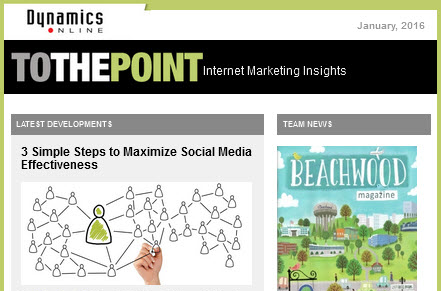The Importance of Drip Campaigns in Your Email Marketing
Lead nurturing has become one of the most powerful tools at the modern marketer’s disposal. Using inbound marketing tactics like social media, content marketing, search engine optimization and email campaigns, we’re able to influence buyer behavior in ways never before thought possible.
The most effective marketing tactic in this inbound marketing repertoire is, above and away, email marketing. This is your target audience literally giving you permission to communicate with them. This is your target audience saying, “I want to hear more from you!” (Note that I still recommend utilizing all of the inbound marketing tools at your disposal.)
But like any marketing tool, email marketing is frequently misused. So how do we differentiate ourselves on this platform? How do we gain – and maintain – access to the coveted inbox?
By building trust.
How to Build Trust via Email
One of the best ways to build trust via email is with a drip campaign. Drip campaigns are known by a variety of different names: autoresponders, marketing automation. You say potato, I say potato . . . I think that aphorism only works when spoken.
But what is a drip campaign? Simply put: it is a scheduled set of emails subscribers receive at pre-determined intervals, or “drips.” So, for example:
- Website visitor fills out a form to download a piece of content.
- They’re automatically placed on a list to receive emails.
- Pre-written, pre-scheduled set of emails will be sent automatically.
- These emails will provide value in the context of the action taken.
- These emails will propel the user further down the sales funnel, whether to a higher-value conversion or a purchase.
But how does this help build trust? A well-implemented drip campaign shows that you can provide value without over-inundating your audience. This means:
- Knowing where your prospects are at in the sales cycle.
- Creating appropriate calls to action.
- Tailoring the messaging to fit that niche.
- Spacing out the emails so that the user is not overwhelmed, or forgets you exist.
- Don’t hard-sell until the final email(s).
- The hard sell can be either a purchase or a higher-value conversion (blog subscriber > how-to guide download).
This is how we, as marketers, convert leads into sales. We nurture the prospects through the sales funnel using top-level techniques like SEO and social media, then propel them further along using content marketing and drip campaigns.
The formula is roughly the same across all industries, with limitless variations on how to execute. Generally speaking, the larger the investment the longer the sales process, which is why it’s so important to cover all your bases and ensure you’re continually driving prospects through the funnel.
A Quick Case Study of a Drip Campaign
We recently used a drip campaign for one of our clients, a retirement living community, executed as a top-level sales funnel technique. In plainspeak, that means we created downloadable content for colder leads (people who were not ready to make a purchase decision) and used a drip campaign to push them to a higher-level conversion. In this instance, our “hard sell” was inviting users to talk with a sales counselor at the community. So the end result wasn’t a sale, given how cold the lead was to begin with, but rather moving them along in the process at a rate faster than they otherwise might have gone.
The campaign was comprised of four emails, including:
- A thank-you email with the user’s PDF download.
- A warm-up email educating them on a topic related to the download, plus a link to a blog post.
- A second warm-up email transitioning to the harder sell with another link to a related blog post.
- The hard sell with a link to an online form: “Talk to a Sales Counselor.”
Since this campaign was launched eight months ago, it has achieved a 49% open rate. Coupled with a 14% click-through rate, we nearly tripled the industry average.
Stay tuned next month when we show you exactly HOW to run a drip campaign!


